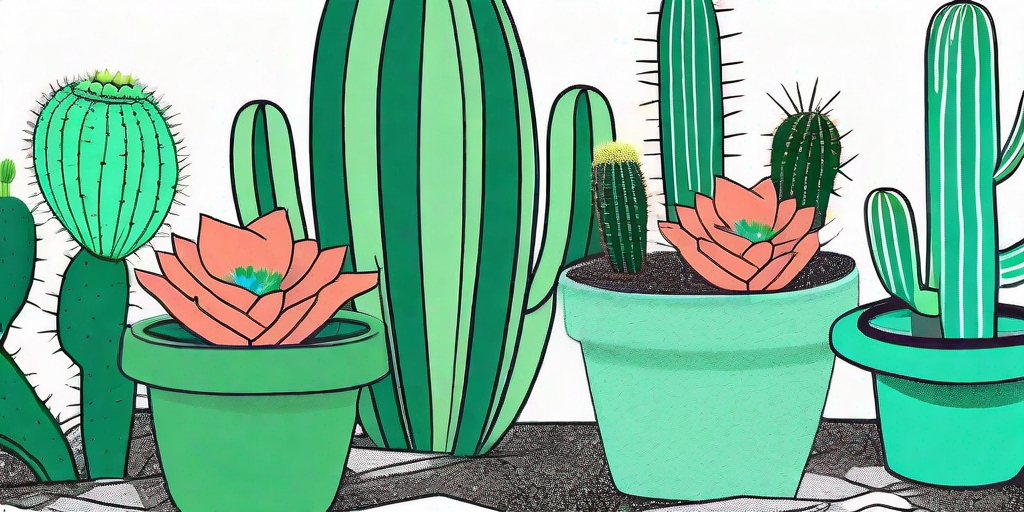
Welcome to the wild and wonderful world of cactus grafting! If you've ever looked at your prickly pals and thought, "I wish you could play nice together," then you're in the right place. Cactus grafting is the art of persuading two cacti to become one, and it's easier than you might think. So, grab your gloves, your grafting knife, and your sense of adventure, and let's get started!
The Basics of Cactus Grafting
Before we dive into the nitty-gritty, let's cover some basics. Cactus grafting is a horticultural technique where you join two cacti together to form a single plant. The bottom cactus is known as the 'stock', and the top one is the 'scion'. The stock provides the root system and nutrients, while the scion brings the beauty and charm.
Why would you want to do this? Well, besides the sheer joy of playing mad scientist with your plants, grafting can help a struggling cactus thrive, create interesting hybrids, or simply make your cacti collection even more unique.
Choosing Your Cacti
Not all cacti are created equal, at least not when it comes to grafting. Some species make better stocks, while others are better suited to be scions. For your stock, you'll want a hardy, fast-growing cactus like a Hylocereus or a Trichocereus. For your scion, choose a slower-growing or more delicate species that could benefit from a boost, like an Astrophytum or a Gymnocalycium.
Remember, the key to a successful graft is compatibility. The two cacti should have similar needs in terms of light, water, and temperature. So, while it might be fun to imagine a Saguaro cactus grafted onto a Christmas cactus, in reality, it's not a match made in heaven.
The Grafting Process
Now that you've chosen your cacti, it's time to get grafting. Don't worry, it's not as scary as it sounds. Just follow these steps, and you'll be a grafting guru in no time.
- Prepare Your Tools: You'll need a clean, sharp knife or razor blade, some rubber bands or grafting tape, and a clean surface to work on. And don't forget your gloves!
- Cut the Stock: Make a clean, straight cut across the top of the stock cactus. Aim for a diameter that's similar to the scion you'll be grafting.
- Cut the Scion: Similarly, cut the bottom off your scion. You want a flat surface that will sit nicely on the stock.
- Join Them Together: Place the scion on top of the stock, making sure to align the vascular rings (the circles you can see in the cut surfaces).
- Secure the Graft: Use your rubber bands or grafting tape to hold the scion in place while it heals.
- Wait and Watch: Keep the graft in a warm, shaded place for a few weeks while it heals. Once you see new growth, you'll know your graft has been successful.
Remember, practice makes perfect. Don't be disheartened if your first few attempts don't take. Even experienced grafters have their failures.
Aftercare and Troubleshooting
Once your graft has taken, it's not a case of 'set it and forget it'. Your new plant will need some special care to thrive. Keep it in a bright but not too sunny spot, and water it sparingly until it's fully healed.
If your graft fails, don't despair. It's often a case of trial and error. Maybe the two species weren't compatible, or the cuts weren't clean enough. Or maybe it was just bad luck. The important thing is to learn from your mistakes and try again.
Common Problems and Solutions
Here are a few common issues you might encounter, and how to solve them:
- Scion Slipping: If your scion keeps slipping off the stock, try using more rubber bands or grafting tape. Just be careful not to squeeze too tight and damage the plants.
- No Growth: If there's no new growth after a few weeks, the graft may have failed. Try again with fresh cuts and a clean blade.
- Rot: If either the stock or scion starts to rot, remove the affected part immediately to prevent it spreading. This is often a sign of overwatering.
FAQs
Can I graft any cactus?
While technically you can try grafting any cactus, some combinations are more likely to be successful than others. It's best to start with hardy, fast-growing species as your stock, and slower-growing or more delicate species as your scion.
How long does it take for a graft to heal?
It usually takes a few weeks for a cactus graft to heal. During this time, it's important to keep the plant in a warm, shaded place and water it sparingly.
Why did my graft fail?
There could be several reasons why a graft fails. The two species might not be compatible, the cuts might not have been clean enough, or the scion might not have been secured properly. It's often a case of trial and error, so don't be disheartened if your first few attempts don't succeed.
Conclusion
And there you have it, a beginner's guide to cactus grafting. It might seem a bit daunting at first, but with a little practice, you'll be creating your own cactus hybrids in no time. So, why not give it a go? After all, who doesn't want their prickly plants to play nice together?
Happy grafting!















